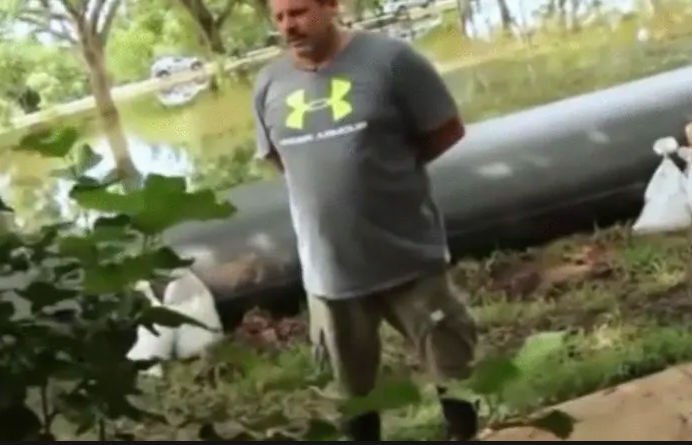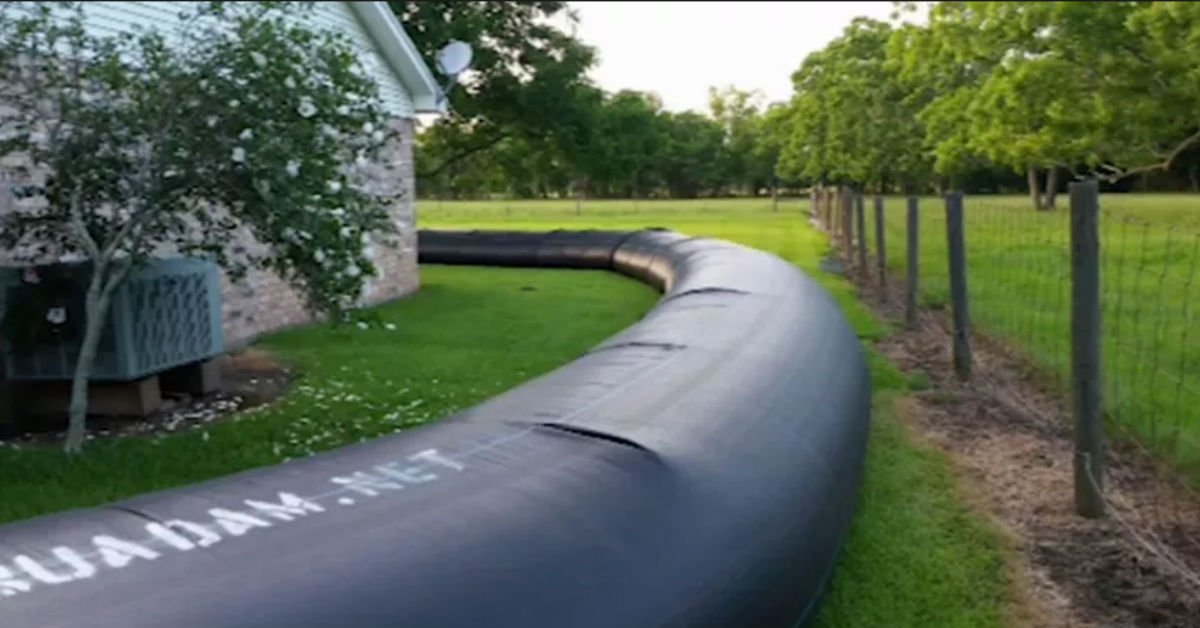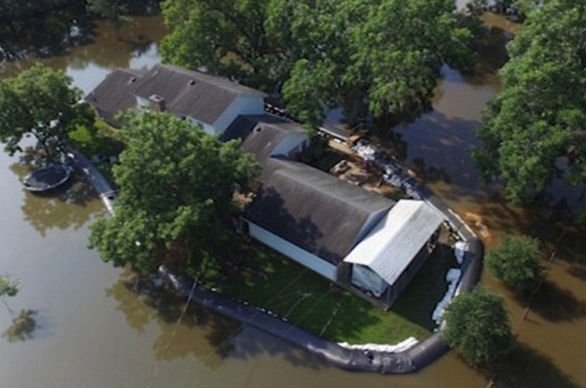When nature strikes, almost nothing is safe from the devastation that is left in its wake. From floods to tornados to dangerous hurricanes they all wreck serious havoc and damage worth millions of dollars.
When Nature decides to go berserk, all we can do most of the time is simply step out of the way, or find ways to protect our properties from damage in any way that we can.

This was exactly what Randy Wagner a Texan did to defend his home from damages during the hurricane season. Randy spent up to $8,300 on a 400 feet plastic material which would protect his home from flood waters during the Hurricane.
It was a crazy investment and many of his friends and neighbors thought spending so much money on the plastic and wasting so much time in putting it up was a totally irrational decision.
But what was an irrational decision to them was Randy’s incredibly smart way of keeping his home safe from the coming storm. Randy built a 400 feet barrier around his home and when the flood came, the plastic contrary to what his neighbors thought, was able to keep the water out from his home. his $8,300 investment ended up saving him from damages that would have cost up to $150,00 to repair.
Just like Randy, it is important to know which precautions to take when a hurricane is about to hit. Here are some basic tips that can help.

Know where to go: it is important that you are always aware of your own environment and you know the best evacuation routes to take before an order to evacuate is issued. You should also make plans for where you can stay. Prepare a kit bag that contains all the basic things you would need in case of an emergency such as a flashlight, batteries, some cash, basic first aid supplies and medication.
On no condition should you stay on in your house if you have been asked to evacuate. In case you haven’t been instructed to evacuate, and will be staying at home, you should make plans for emergency supplies that will last you for several days even without power or water. You should also make plans for emergency communication for your family or even your community.
You can easily get information on your community emergency communication service online.
Preparing Your Home
As part of prepping for a hurricane, you should also try to safeguard your home in order to avoid and minimize damage as much as possible. Trim tree branches close to your house ahead of the hurricane season as they can fall when the wind hits and damage properties around.
Prepare your home to receive the excess water that will be coming in by clearing any clogged areas in rain gutters and removing any debris. You should also secure and reinforce the roof, windows, and doors so that they are strong enough to handle the incoming force of the weather.
Because power outages are almost inevitable during storms, you should plan ahead and install a generator or get a portable generator. If you can afford it, then consider building a “FEME safe room” or “ICC 500 storm shelter” in your locations above flooding levels which will protect you from high-winds.

Also, if you are not evacuating, plan you should stay at home and inform your friends and family members of your location. It is not advisable to be on the road during stormy weather.
When bunkering up at home during a hurricane, shut all the windows and storm shutters and stay away from the windows to avoid getting injured from broken windows.
To preserve your food, make sure your refrigerator is set to the coldest power so as to preserve your stored food for longer even when you lose power. Try to stay updated with weather and emergency reports.
What to do when a hurricane is 36 hours from arriving?
You should turn on your TV or any other means you would be using to stay updated with weather reports and emergency instructions. Check the emergency kit which you prepared and be sure it has all the basic things you need in sufficient amount. Prepare a way to communicate, preferably through messages or emails which is more reliable than making calls.
Go over evacuation plans with your family members again. Keep your car close and in working condition, just in case you have to make a last minute run for it.
What to do when a hurricane is 18-36 hours from arriving?
For quick access to weather and emergency updates and instructions, bookmark your city’s website. Take away lightweight objects that can be easily projected by high winds such as patios, garbage cans etc. you can bring them inside if they are safe to bring in but harmful objects like propane tanks should be secured outside instead. Check to make sure all your windows are closed tightly. You can board up your windows if possible.
What to do when a hurricane is 6-18 hours from arriving?
If your TV/radio, lines are not off yet, turn on the TV for updates. You should also check the weather website every 30 minutes for updates. Storms are unpredictable and can change directions and speed very fast. Also, make sure all your phones are charged fully in case you lose power.
After a Hurricane?
Listen for updates and instructions and check with your family members to confirm they are all fine. Do not return home until you have confirmed that it is absolutely safe to do so.
When returning home avoid walking or driving through flood waters as they can be dangerous and might contain debris or hide dangerous places where the ground is unstable or have been washed away.
The water can also be charged with electricity due to downed lines. Take a picture of the damages done to your property for insurance purposes.
Join us in prayers for those who have lost friends and family from recent hurricanes. Stay safe always. It is better to be careful than sorry.




